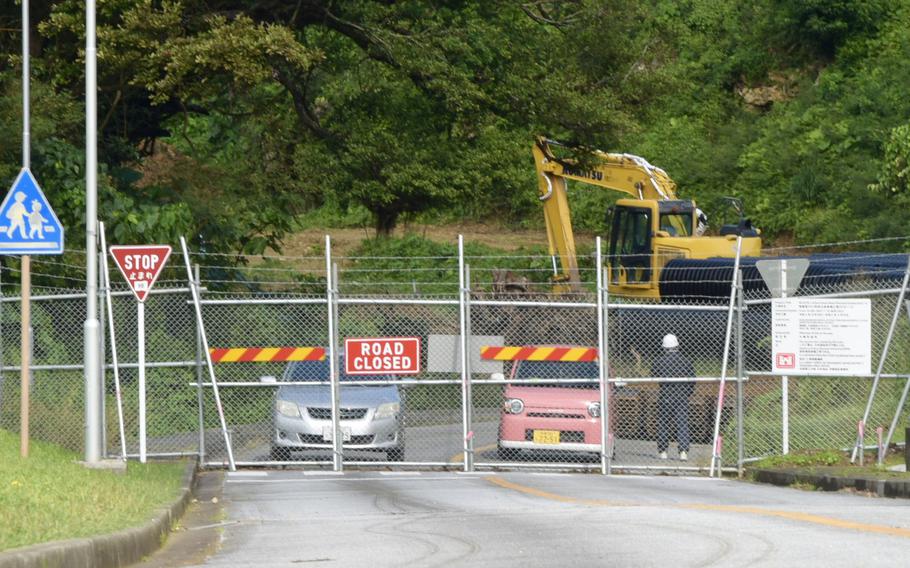Asia-Pacific
Unexploded WWII anti-tank rockets close construction site at Marine base on Okinawa
Stars and Stripes December 19, 2022

Four M6-series 60mm anti-tank rocket rounds were removed Dec. 16, 2020, from a construction site on Camp Foster, Okinawa, shown here Dec. 19, 2020. (Frank Andrews/Stars and Stripes)
CAMP FOSTER, Okinawa – Japanese specialists removed four pieces of World War II-era ordnance discovered last week at a construction site in the vicinity of a high school on this Marine Corps base.
The unexploded rounds presented no danger to Kubasaki High School, nearby housing or traffic, according to Marine Corps posts on social media, which stated the “radius of concern” for the unexploded rounds was about 450 feet.
The Marine Corps recommended a further site survey after members of the Japan Ground Self-Defense Force removed the anti-tank rockets Friday, according to a post that day on the official Facebook page for Camps Foster and Lester.
Japanese explosive ordnance disposal technicians, working with their Marine counterparts, took the M6-series 60-milimeter anti-tank rockets to a prefectural storage facility in Yomitan, a Ground Self-Defense Force spokesman told Stars and Stripes by phone Monday. The shoulder-fired “bazooka” rounds will be detonated at a later date.
The spokesman said removal of the 15-by-4-inch rounds went forward “without any trouble.”
The rockets were discovered by Japanese construction workers at 5:04 p.m. Wednesday in the construction site between the high school and the former Kishaba North housing area, according to the Marine Corps posts on Facebook. The Japanese government manages the area, which was closed off after the discovery.
U.S. and Japanese EOD experts agreed there was no need to evacuate any students, staff or families from the surrounding area, according to the Facebook posts.
More than 20 additional magnetic signatures at the construction site still “need to be uncovered,” according to the Marine Corps, which also recommended a safety survey.
“Many of the signatures yet to be uncovered are inside an arc of concern for housing,” the post said.
Marine Corps Installations Pacific did not respond to an email Monday seeking more information about the unexploded ordnance.
Unexploded ordnance left over from World War II is often uncovered during construction projects on Okinawa, the scene of heavy fighting in the closing days of the war as the United States’ island-hopping campaign finally reached Japanese soil.
Approximately 10,000 tons of bombs were dropped in Okinawa during the war and nearly 2,000 remain undiscovered, according to the prefecture’s General Bureau website. More than 13 tons were disposed of between April 1, 2021, and March 31.
The 101st EOD Unit of the Ground Self-Defense Force surveyed the site Thursday, the Self-Defense Force spokesman said. Some government officials in Japan speak to the media on condition of anonymity as a requirement of their employment. The EOD technicians waited until Kubasaki students and staff were dismissed for their holiday break before removing the ordnance at 2 p.m. Friday, the Facebook post said.
The Self-Defense Force generally waits until it collects a large amount of recovered ordnance before it detonates them en masse, the spokesman said.